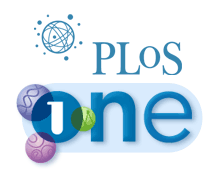 When retraction notices and expressions of concern appear, particularly those that are opaque, we try our best to find out what’s behind them, whether it’s better explanations or the steps that led to moves. Today, we have one story in which we’ve been able to learn a lot more than usual.
When retraction notices and expressions of concern appear, particularly those that are opaque, we try our best to find out what’s behind them, whether it’s better explanations or the steps that led to moves. Today, we have one story in which we’ve been able to learn a lot more than usual.
In April, Bas van Steensel, Wendy Bickmore, Thomas Cremer, and Kerstin Bystricky sent a letter to about 80 leading labs in nuclear organization and steroid receptor biology. It began (we’ve added some relevant links): Continue reading A PNAS expression of concern appears — and so does its revealing backstory





 A 2011 paper in PLOS ONE has been retracted due to “inappropriately assembled” images. The issues, which were highlighted in a correction in TK, are attributed to the corresponding author, Paola Palozza, who has since passed away.
A 2011 paper in PLOS ONE has been retracted due to “inappropriately assembled” images. The issues, which were highlighted in a correction in TK, are attributed to the corresponding author, Paola Palozza, who has since passed away.
